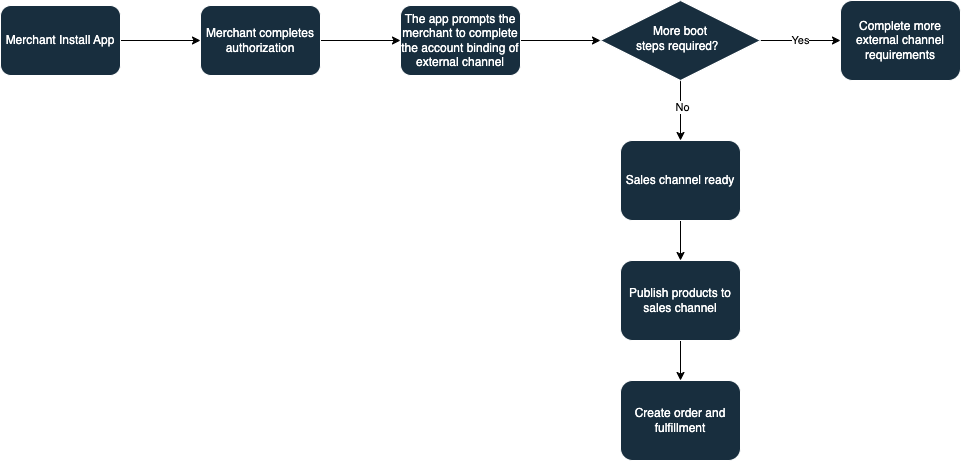Overview
Sales channels are Apps that allow merchants to reach customers and make sales outside of their online stores, using platforms including eBay, Amazon, Facebook by Meta, Instagram by Meta, and other external channels.
These external sales channels can be integrated into the merchant's Admin backend in various ways.
For example, it can enable merchants to manage orders from these external channels alongside their SHOPLINE store orders within the Admin interface. Merchants are then able to fulfill orders in the same manner and manage products from these external channels using the SHOPLINE admin interface.
External Channels
Storefront
A platform that allows merchants to create online stores for selling their products outside of SHOPLINE. Examples include WordPress, Bloomreach, Acquia.
Point of Sale(POS)
Sales devices used by merchants for handling transactions, managing inventory, and tracking customers in offline settings. Examples include Springboard, Bindo, Vend.
Markeplaces
Platforms where merchants can list and complete sales, with the transaction process being handled by the marketplace. Examples include Amazon, eBay, Shopee, Facebook Marketplace, Walmart.
Marketing
Platforms for merchants to communicate with their customers, promote their brand and products, and discover business opportunities. These channels do not support checkout and transactions. Examples include Facebook Ads, Google Shopping, Pinterest, Instagram by Meta, TikTok.
Merchant experience in sales channels
The following diagram illustrates the functionalities and the merchant experience flow in sales channel apps:

- Merchants install the sales channel App.
- Merchants authorize the sales channel app through OAuth 2.0, and the developer obtains a token.
- The sales channel prompts the merchant to connect their third-party channel account. If the merchant doesn't have an account registered with the third-party platform (e.g., registering a Shopee account), they will be prompted to create an account. This account linking process occurs outside of SHOPLINE and is completed within a pop-up window provided by the third-party channel.
- If there are additional steps to be completed or if the merchant needs to wait for approval from the third-party account, these actions can be performed during the guided process.
- Merchants publish their products to the sales channel app, which reads the product list and keeps the product information synchronized using webhooks.
- Orders are created in the SHOPLINE Admin backend, and developers can also use the order creation API to achieve this.
Create and manage checkouts
You can create and manage checkouts in your sales channel app using two methods:
- Using the Permanent cart links o directly bring customers to the store's checkout page with a preloaded cart.
- Using the Storefront API to create a checkout interface and obtain the Checkout URL。
Requirements for Sales Channel Apps
-
App review:
Sales channels are a type of app and must comply with the app review guidelines. -
App conversion to sales channel:
The App must go through a review process by the SHOPLINE team to be converted into a sales channel. -
Target platform:
A sales channel must integrate with a target platform, such as listing products on platforms like Amazon, eBay, or the merchant's own mobile app, where the final customer completes the purchase. -
Account association:
You need to obtain authorization from the merchant to associate their third-party channel account information. -
Product publishing::
You must synchronize the products to the third-party channel and complete the product listing on the third-party platform. -
Payment and order management:
You are responsible for generating orders and processing payments on the third-party channel, while also synchronizing order information in the SHOPLINE merchant admin backend.



